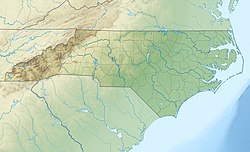| Tournament information | |
|---|---|
| Location | Pinehurst, North Carolina |
| Established | 1902 |
| Course(s) | Pinehurst Resort, Course No. 2 |
| Par | 72 |
| Length | 7,007 yards (6,407 m) [1] |
| Tour | PGA Tour |
| Format | Stroke play - 72 holes |
| Prize fund | $7,500 |
| Month played | November (1945–1951) March |
| Final year | 1951 |
| Final champion | |
| | |
| Location map | |
Location in United States Location in North Carolina | |
The North and South Open was one of the most prestigious professional golf tournaments in the United States in the first half of the twentieth century. It was played at Pinehurst Resort in North Carolina, long the largest golf resort in the world, which also staged a series of other tournaments with the "North and South" name, some of which continue to this day.
Contents
The event ran from 1902 to 1951 and was won by many major champions, including three-time winners Walter Hagen, Ben Hogan, and Sam Snead. Played in March until 1944, the final seven events were held in early November. Hogan's win in 1940 at age 27 was his first as a professional; the winner's share was a thousand dollars. [2] [3]
It was cancelled when the professionals asked the patrician patriarch of Pinehurst, Richard Tufts, who was a great champion of amateurism, to increase the prize money in line with PGA Tour rates. The final tourney's purse was $7,500 in 1951, with a winner's share of $1,500. [1] The Ryder Cup was held at the course the previous week, [4] but only five of the nine on the winning U.S. team stayed to play. [5]

